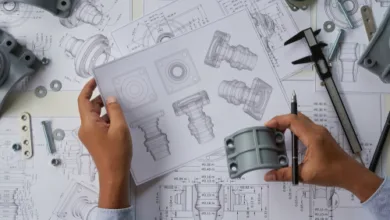St. Lucia’s investments in infrastructural projects to pay big dividends
ST. LUCIA – Saint Lucia’s active program of national infrastructural development is aimed at transforming and modernizing the island’s physical and economic landscape. And those projects associated with the 2007 Cricket World Cup, while preparing for the greatest sporting even the island will ever have hosted, are also geared at leaving an enduring legacy that will go beyond the boundary of the game.
So says Prime Minister Dr. Kenny D. Anthony, who has ministerial responsibility for Finance and Economic Development and supervising the country’s national development thrust.
Necessary Sacrifice
Prime Minister Anthony, today revisiting some of the many major infrastructural development projects under way here — ranging from water sector reform to hotel development and highway construction – says they are also aimed at taking the island to the next stage in its development of a modern national infrastructure.
He said the implementation of those projects “also brings a certain level of inconvenience in some areas, but while the inconveniences may be regretted, they also represent a necessary sacrifice for improvement of conditions for the future, for all of us.”
Among the projects most discussed in the local press these days, are the major works associated with the expansion of the Castries/Gros-Islet Highway, with simultaneous work to overhaul an outdated water transmission system that resulted in an acute water shortage in several areas in the north of the island.
There are also the Flood Mitigation Projects being undertaken simultaneously in Castries, Anse La Raye and Dennery.
Then there’s the reconstruction of the Vieux Fort-Soufriere Highway, one of the government’s biggest road development projects, which most demonstrates the types of challenges faced by the government in its efforts to modernize Saint Lucia’s infrastructure.
Unforeseen Challenges
According to the Prime Minister, “The government inherited a lot of worn-down infrastructure — infrastructure that has passed its useful age and which must be mended or replaced.”
Dr. Anthony sees the Vieux-Fort/Soufriere Highway was “a good case in point, of the unforeseen challenges we often face in the developmental thrust.”
He says one such costly exercise was the result of the fact that “all the old pipes buried below the road surface along that route had to be uprooted and replaced during the construction of the new highway, delaying the completion of the project and at significant extra cost.”
According to the Prime Minister: “We moved mountains and actually cut corners and moved homes to make the trip from Soufriere to Vieux Fort shorter and more comfortable for all, but there are those who will only remember the cost without acknowledging that the benefits still outweigh the unforeseen but also unavoidable extra costs.”
Expanding Opportunities
Dr. Anthony says, the criticisms over costs notwithstanding, the island’s developmental thrust will continue apace.
“A major goal of the government is to put the island on a good footing, to ensure that we can expand on the investment opportunities that currently exist,” says the Prime Minister.
“Meanwhile,” he adds, “the government’s vigorous programme of infrastructural development puts the island on a roll. We are doing exceedingly well at present. Employment is the highest it’s ever been in the past fifteen years and our infrastructural landscape is changing quickly.”
Repainting Social Landscape
The Prime Minister said the major projects, which include the construction of new correctional facilities, police stations and fire stations, as well as a national flood mitigation project, construction of more new schools, a new national hospital and a new psychiatric hospital, to be followed by the construction of a new National Cultural Complex, “are also aimed at repainting the social landscape.”
“What we have to do now,” he says, “is to ensure we manage the next few years very carefully, in order to maximize the benefits to be accrued from the investments in today’s infrastructural expansion.”
Benefits Beyond Cricket
Dr. Anthony challenged efforts by some to negatively highlight the inconveniences caused to commuters by the continuing road works on the Castries-Gros Islet highway, to dampen the excitement and enthusiasm surrounding Saint Lucia’s hosting of the Cricket World Cup next year.
The Prime Minister says that contrary to a view held by some, “the country’s current infrastructural development programme is not centred entirely on the Cricket World Cup.”
“When completed,” he explains, “the projects will all become vital resources belonging to us and available for use in several ways by us and others, for long after the World Cup is over.”
Keeping Up The Pace
Meanwhile, the Prime Minister says the government’s thrust to improve the nation’s infrastructure will continue unabated “because it is our mission to ensure that our country’s development keeps pace with regional and international standards.”
He points out that the country’s infrastructural development plan, “conceived in 1997 and renewed in 2001, was pursued throughout the past nine years.”
Managed Transition
Dr. Anthony says the country “has managed well the transition from total reliance on bananas to a diversified tourism industry.”
“We have done it in such a way that today, over 8,000 Saint Lucians are now working in the tourism industry, earning together over $150 million per year, which is better than any of the best years of bananas.”
“We are committed to continuing the thrust to approach all our developmental needs with equal and even more vigour,” he said, “because the needs of our country have to be met and we have to keep pace with the rest of the world, even while some continue to use torchlights to peep through cracks and crevices in search of faults to criticize.”
Billions Invested
According to Dr. Anthony: “Billions have been invested in our country in the past nine years to build infrastructure and raise standards, to improve health, to provide education, to enhance transportation, to take water where its never been before, to expand electricity, to expand tourism throughout Saint Lucia, to help bananas, to provide better facilities for all and to improve our social infrastructure.
“It is now for us to manage these resources in ways that will continue to redound to the benefit of the country and all of us who live in it.”


